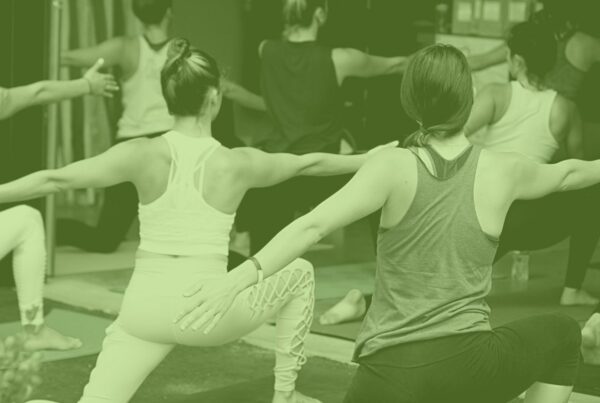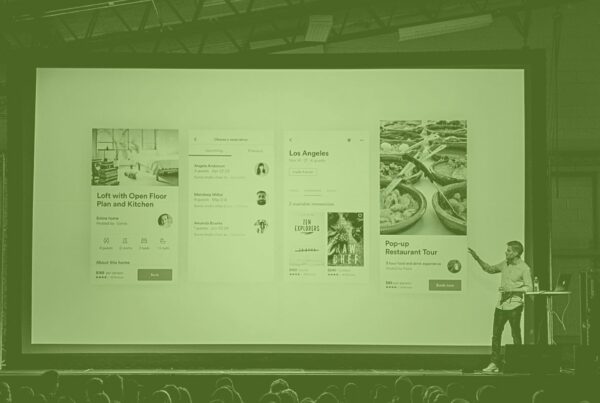Hi! You’ve gone too far back in time, it seems! Looking for the latest Trends Guide? Check out the 2023 Endless Events Industry Trends Guide right here!
Just like that, we blinked and it’s time to talk about the 2020 event trends. You might be asking yourself, what will be shaking up the industry this year? How will the industry evolve? We have some predictions! This year we stepped it up and surveyed hundreds of #Eventprofs to weigh in on the hottest trends for 2020. We could list out hundreds of trends but at that point is it even a trend? We don’t think so. Instead, we’re bringing you a curated list of the top event trends for 2020. Buckle up it’s going to be an exciting ride!

 2020 Event Trends: Personalization for Attendees
2020 Event Trends: Personalization for Attendees
Not everyone at your event will be in the same place in their journey. Personalization allows each attendee to get exactly what they need. This will be one of the biggest trends of 2020. Personalization for attendees leads to a more successful event. When personalizing your event will feel custom and well thought out. Your attendees will feel they got much more value out of attending when their needs are met. There are many ways you can personalize your event but here are a few of our favorite ways.
Tailored Break Out Session Paths
In our 2020 event trends survey, 47% of event planners believed tailored breakout session paths would be the biggest personalization trend for events in 2020. It’s not really a surprise, breakout sessions are a staple at conferences across the world. Giving attendees a chance to personalize the breakout session path they take is much more satisfying than assigning them where to go.
Attendees can look at the agenda, and tailor their schedule to the experience they are looking to have. INBOUND is an event that excels at this. Each year attendees get to choose their track and pick breakout sessions. They have breakout tracks where there are suggested sessions for each track such as marketing and customer service tracks. Attendees can filter the hundreds of sessions by a path to narrow their focus or mix the tracks creating their own adventure. With 377 sessions this year spanning everything from entry-level marketing, software deep-dives, leadership, and inspirational chats the options were limitless allowing attendees to get the value they desired.
Data-Driven Activity Suggestions
Using data will be at the forefront of planning events in 2020. Using that data to personalize an attendee’s experience will delight your guests. Choosing what to do at an event especially larger scale events with hundreds of sessions, networking events, keynotes, and more can feel very overwhelming. Solution? Have data-driven activity suggestions in your event app. Apps are getting smarter. They have the ability to make activity suggestions using algorithms based on attendees’ profiles and networks. For example, an event app might suggest an event marketer go to a content creation workshop.
This is a win-win for both attendees and planners. Attendees will feel the event is catered to their needs while planners can rest assured they are creating an engaging experience for all in attendance.
Sending Personalized Content and Resources
In a world with an abundance of content it is critical you personalize your content to stand out. Without question, personalized content is more effective a Demand Metric Study from 2016 found that 80% of people found personalized content more effective than content that hasn’t been personalized.
Receiving personalized content improves attendees’ overall opinion of your event. Content personalization can take many forms, it can be as simple as including attendees’ names within emails, but we suggest you take this further by segmenting your attendees and sending personalized content and resources to those segments. For example, if an attendee downloads an e-book and watches a video on the same topic, you can then send them personalized content related to those previously viewed pieces to create a custom experience.
 2020 Event Trend: A Continued Focus on Sustainability
2020 Event Trend: A Continued Focus on Sustainability
Sustainability in events cannot be an afterthought. As event planners, we are responsible for the impact our events have on Earth. This year, events will start thinking more holistically about what we can do to improve our impact from banning single-use plastics and educating our attendees, to offering more plant-based catering. We will also see a rise in using recycled materials for event design. These small steps will propel the industry forward towards reducing our carbon footprint and impact on the earth.
 2020 Event Trend: Increased Need for Event Security
2020 Event Trend: Increased Need for Event Security
Sadly, this trend continues to rise. It is an issue that plagues our industry. Every year it seems we are met with new event security concerns and needs. Often security and safety concerns are not met with solutions. Earlier this year we interviewed Lori Pugh from MPI about event safety. During our interview, Lori informed us that “only 53% of event planners actually have an emergency plan in place”. This is unacceptable.
This year we will see this start to change and a focus on solutions to the increased need for event security in the form of crisis communications, cybersecurity, and improvements in onsite security. It is your responsibility as an event prof to keep your attendees safe.
Strategic Crisis Communications
47% of planners thought crisis communications should be the biggest focus when it comes to security in 2020. And they are right! If there was a crisis before, during or after the event how do you plan to communicate with your attendees and stakeholders? If you handle a crisis the wrong way, you might not have a job or event again so you need a plan. Everyone at events has a role to play when it comes to crisis communications. MPI offers an excellent crisis communications course led by our very own #EventIcons host, Alex Plaxen, that will allow you to create and prepare a crisis communication plan, so you will be ready if a crisis strikes.
Onsite Security Improvements
As an event planner your number one priority should be every attendee is safe at your event. Have conversations about security with your venue and everyone on staff. Make sure they are aware of emergency and crisis communication plans.
Technology can be a powerful tool when it comes to onsite security. Use your app to empower attendees to act on reporting any potential security threats or suspicious activity. Furthermore, include maps with fire exits, and information on where to go in the case of evacuation.
Cyber Security
Only an alarming 5.26% of planners surveyed believed cybersecurity should be a top priority for events. This is a huge mistake! Event registration platforms and management software hold a goldmine of information for hackers. As event profs, we have the responsibility to protect our attendee’s personal data. Brandt Krueger put it best “The amount of information that we are the guardians for is really pretty ridiculous. We’ve got personal first and last names of executives, titles, email addresses, phone numbers, personal cell phone numbers, travel itineraries, and hotel reservations. All of this information is a gold mine for hackers because all they need is a couple of legitimate pieces of information”. With just a little phishing and a lapse in security on the events, hackers can have the keys to the castle and all the data they need to hack your attendees.
If the last paragraph scared you, good, it SHOULD! First, we are happy to report this issue is coming to the forefront, governments and companies all around the world have begun to implement several measures to ensure that data privacy finally becomes a reality. First, we saw Europe roll out GDPR regarding privacy and personal data. Now in the US, we are seeing the “Mind Your Own Business Act”, essentially the bill would allow the FTC to set minimum privacy and cybersecurity standards for tech companies. If tech companies do make some sort of breaches they will be fined. The bill would also make it a crime for senior executives to lie to the agency regarding privacy standards and would empower state attorneys to enforce regulations.
But that is just the government’s role, what can planners do NOW to prevent a cybersecurity disaster? Make sure your event data is encrypted, you are using a password manager (hint: don’t leave event registration software passwords on a sticky note on the laptop at check-in), use 2-factor authentification for logins, and more. If you would like to learn more about how to prevent security breaches check out our free webinar on how to prevent cyber attacks.
 2020 Event Trends: Unique Venue Experiences
2020 Event Trends: Unique Venue Experiences
53% of planners surveyed said moving away from hotel venues and to more unique venues was the biggest location trend of 2020. Let’s face it ballrooms can be boring. Choosing a unique venue allows you to push your creativity and talents to the extremes. You can think outside the box and truly create a one-of-a-kind event experience.
Unique venue experiences also open up a world of options for event planners, think studios, industrial lofts, farms, museums, and more. Just be sure when choosing an exciting new location that matches your brand, event goals, and overall event mood. You will also want to keep in mind unique venues come with their own set of challenges planners aren’t often faced with within more traditional venues such as lack of power supplies and rigging points, the need to bring in WiFi, or you might need to build-out staging. This can be wonderful and allow for a truly custom event design but might require a bit more legwork to get there!
 2020 Event Trends: Plan Events Virtually
2020 Event Trends: Plan Events Virtually
We believe the industry will continue to move forward with planning events virtually and cutting down on in-person site visits. The technology is already there to plan remotely.
Site Visits
You can do a lot of pre-planning by just going to venue sites. Most venues have floorplans, videos, and most basic information such as capacities and catering options right on their site. Taking it a step further, site visits are now going virtual. From video meetings to VR venue tours planners can now utilize technology to plan an event at a venue they have never even stepped foot in. Not only can this save planners time but also is more sustainable. But it doesn’t just stop at site visits!
Collaborating in a Virtual World
With today’s technology, collaborating with team members near and far is simple. You can virtually hold staff and vendor meetings virtually with tools like Zoom and handle daily communications through Slack. Collaboration tools such as Trello and GDrive make staying organized and sharing documents a cinch!
 2020 Event Trends: Interactive Live Event Entertainment
2020 Event Trends: Interactive Live Event Entertainment
Immersive experiences will become a focus and one of the biggest 2020 event trends. 78.25% of the hundreds of event planners surveyed placed it at #1 above all other types of live entertainment. People crave human connection and this is exactly why your event needs to have immersive experiences. Immersive experiences can take many forms from instagrammable social media moments to escape rooms and puppy playpens. The more creative you can get the better.
 2020 Event Trends: Data-Driven Decision Making
2020 Event Trends: Data-Driven Decision Making
74% of event profs surveyed agreed data drives their decision-making. Using data to plan and guide event decisions will come to the forefront in 2020. Data is a powerful tool that can help create a successful event. Data can breathe new life into events. You can use data to make important decisions for your event in several ways that weren’t possible before. Most commonly event profs use data to check attendance numbers but going beyond that will result in happy attendees who want to come back year after year.
Creating a Personalized Experience and Predictive Analytics
We broke this down above, but to reiterate personalized experiences lead to happier highly engaged attendees. Making data-driven suggestions on what attendees should go to such as breakout sessions or VIP cocktail hours will not only help your attendees navigate large events but make them feel custom to their experience. You can also use this information to predict trends for future events.
Managing Expectations and Avoiding Bad Experiences
Use your event app to allow guests to give feedback in real-time. Attendees can let you know if the venue temperature is an issue, whether lighting is adequate for note-taking at a conference and if they are dissatisfied with the cleanliness of amenities. By using data to manage expectations and make adjustments you can immediately resolve a bad situation, saving a negative experience from affecting many more attendees.
Real-time event changes
Gone are the days when you had to wait for the post-event survey to come trickling in to make changes. Data allows you to see what is working and what is not at your event in real-time. Technology such as RFID and smart badges will allow you to see what parts of your event are popular and which parts might need a boost. If there is a noticeable dip in attendance in a certain speaker’s presentation you can address the issue immediately. From there you can immediately adjust push notifications, signage, and more to encourage more attendees to go to those less trafficked areas of your event.
 2020 Event Trend: A Focus on Diversity and Inclusion
2020 Event Trend: A Focus on Diversity and Inclusion
Diversity and inclusion will stay top of mind when planning events in 2020. When planning events there is not a cookie-cutter attendee, you will need to plan with diversity in mind. Diversity and inclusion go way beyond race and ethnicity, it spans age, gender, physical ability, religion, language, allergies, and more. We are seeing a push to do better at celebrating diversity and being inclusive.
From inclusive language on signage, inclusive food options, better representation on panels, and clear codes of conduct we’re seeing major strides in this area. We are happy to report an increased effort to create more inclusive events for everyone.
 2020 Event Trends: Improvements in Event WiFi
2020 Event Trends: Improvements in Event WiFi
Bad event WiFi can really put a damper on your event. But a lot of planners don’t know where to start to fix this issue. The biggest issues we see where improvements can and should be made are our WiFi costs and fixing connectivity and speed issues at your event.
64% of event planners feel they are overpaying for event WiFi. You might feel stuck paying for hotel WiFi that isn’t that great, but you don’t need to do that. You DO have other options.
In order to improve your WiFi and save on costs, you need to first understand event WiFi is not one size fits all. There is no blanket formula that will make your event have great WiFi, just like event AV there are many moving parts and variables. In order to improve your event wifi first, planners will need to gather a basic understanding of event WiFi. If you learn the terminology and do some homework beforehand like calculating your event bandwidth needs (check out our free event bandwidth calculator).
For more on this topic check out our 10 best tips to make the most of your event WiFi.
 2020 Event Trends: Wearable Tech
2020 Event Trends: Wearable Tech
Wearable technology is transforming events. From planning to improving attendee experience wearable tech is here to shake things up. We have covered how wearable tech can improve event planning by using the data. But let’s take a minute to discuss the power wearable tech can have to create a seamless user experience.
How Wearable Tech Improves Experiences
If you know me, you know I’m a huge Disney fan. So not surprisingly, today, we’ll be using Disney’s Magic Bands as an example of how wearable technology can greatly improve and simplify attendees’ experiences. If you aren’t familiar Magic Bands are bracelets that contain RFID technology. When you are a guest at Disney resort, each member of your family receives one.
The band contains everything you need for your stay, it is your hotel key, your payment, it holds your reservation information, tickets and more. Magic bands create an easy experience where guests can put them on and forget the rest. No need to worry about fumbling for your wallet to pay when your hands are full, just scan your band and keep moving! Have a sleeping kid in your arms when you get back to the hotel? No problem just scan the band!
The Future of Wearable Tech
I see this being the future for events as well. Every event will have its own version of a magic band. This will make for a more seamless attendee experience. On top of being an attendee’s wallet, hotel key, and badge with technology like Klik attendees will be able to tap badges and exchange networking information which allows people to focus on the conversation instead of awkwardly exchanging info. Perhaps taking it further into the future events will use tech data to add in wait times and more.
2020 Event Trends: It’s a Wrap!
These 2020 event trends will take over the industry in 2020. We hope you find this useful and can implement the trends that suit your event best. Which trends are you planning on using in the coming year? Did we miss any trends you think are going to be emerging? Let us know!









